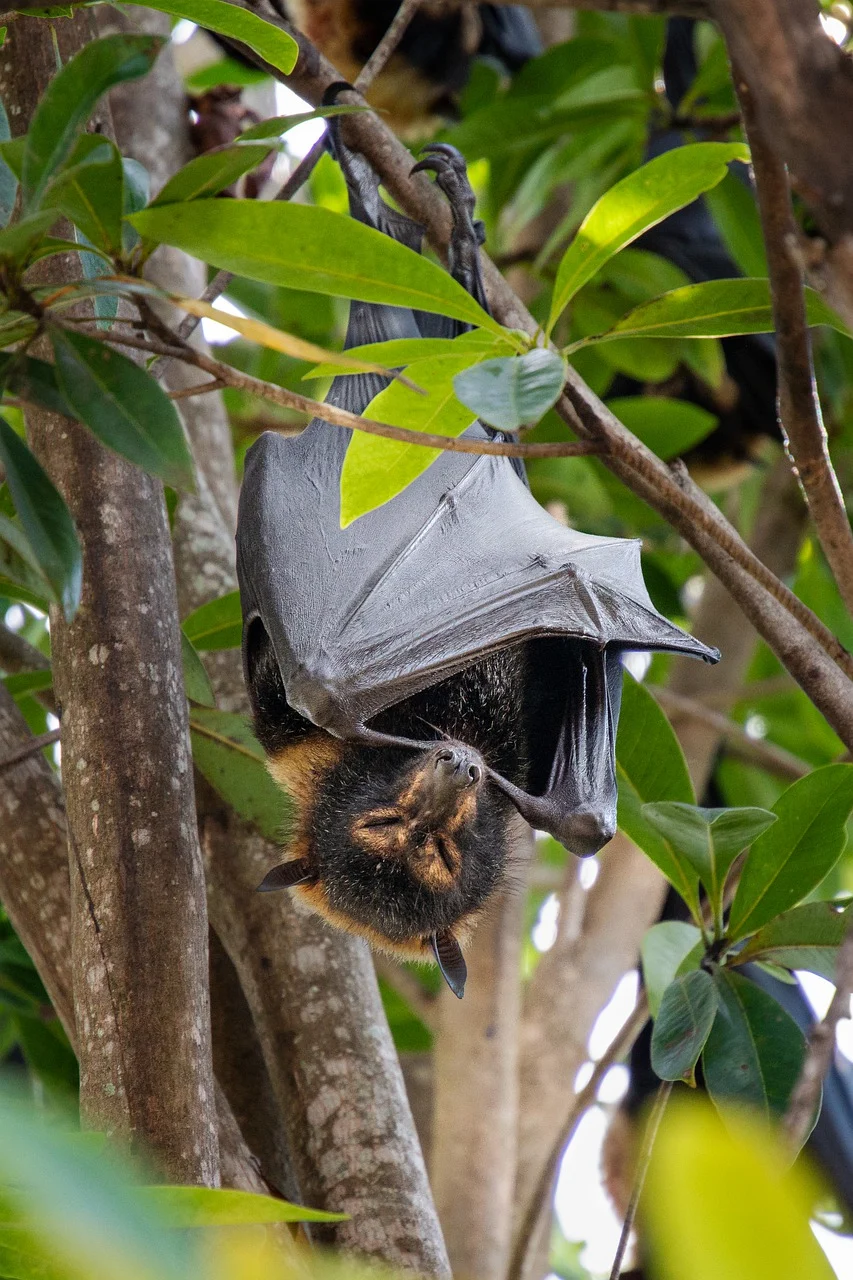The spectacled flying fox
In the north-eastern regions of Queensland, from the lush mountains of Tully to the sandy beaches at the tip of Cape York and islands in Torres Strait, is an unsung guardian of biodiversity—the spectacled flying fox. This remarkable species, also known as the spectacled fruit bat, has a crucial ecological role and is facing threats that could jeopardize not just its own survival but also the health of the ecosystems it supports.
Flying foxes, including the spectacled flying fox, are now classified by the IUCN (International Unionfor Conservation of Nature) as endangered and are essential for the vitality of forests and the stability of ecosystems. Their role in dispersing seeds and pollinating flowering plants is indispensable for regenerating forests. They play a vital role in pollinating eucalyptus trees and spreading the seeds of rainforest trees, contributing significantly to the biodiversity of north-eastern Australia.
Apart from their ecological significance, flying foxes hold cultural and spiritual significance for manyAboriginal communities. They are often featured in Dreamtime stories and art, symbolizing various meanings and connections to the land and sky.
Primary threats
In recent years, the spectacled flying fox has faced a rapid decline in population due to a combination of factors. Habitat loss, urbanization, and climate change have all played a role. Extreme weather events, such as heatwaves, have been particularly devastating. In 2018, a heat event in Cairns caused the death of 23,000 individuals. Additionally, negative public sentiment towards flying foxes has led to mistreatment and a lack of support for conservation efforts.
How you can help
1. Use safe netting: When protecting fruit trees, use wildlife-friendly netting that doesn’t pose a risk to flying foxes.
2. Support local wildlife carers: Donate to or volunteer with organizations that rescue and care for injured and orphaned flying foxes.
3. Create a flying fox-friendly garden: Plant native trees and provide food sources that attract and support flying foxes, such as flowering plants. The natural diet is rainforest fruits, riparian zone flowers, and flowers from the Myrtaceae, primarily Eucalyptus and Syzygium species.
Resources for Further Information
- Australian Museum’s Spectacled Flying Fox Conservation Information
- Animals Australia’s Spectacled Flying Fox Campaign
-Queensland Government’s Flying-Foxes and Food Trees
Author: Isabella Adonailo

